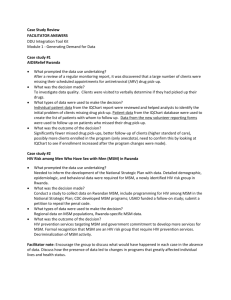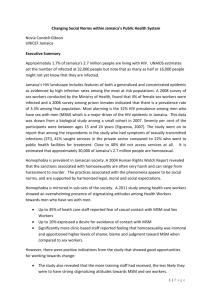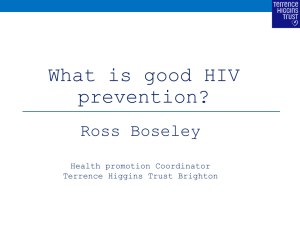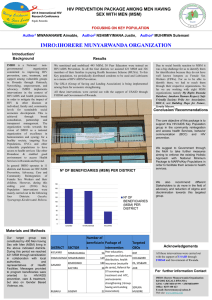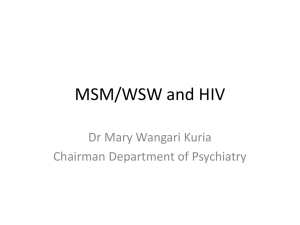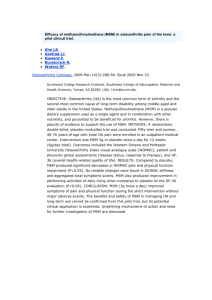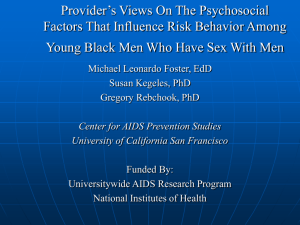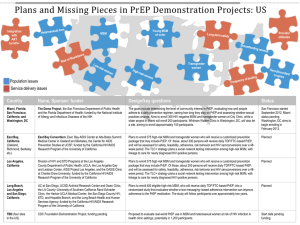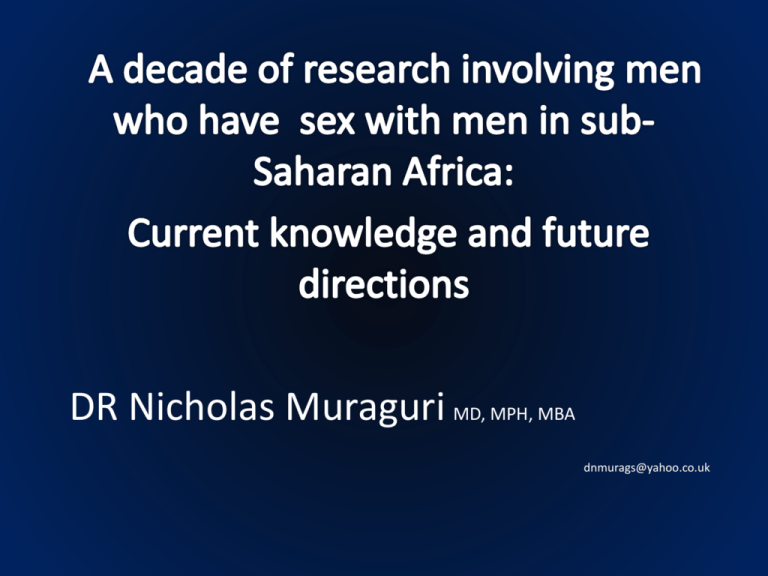
DR Nicholas Muraguri MD, MPH, MBA
dnmurags@yahoo.co.uk
Five gay men arrested in Mombasa,
Kenya; Mobs call for
death by fire
Police drag gay man from
KEMRI building and arrest
him
Outline
•
•
•
•
•
•
Background
Review methodology
Highlights of findings
Study Challenges and Limitations
Future directions
Conclusions
Background
• UNAIDS estimates MSM account for about 510% of the global burden of HIV
• Considerable variation between countries and
regions
• MSM in Africa among the least studied, but
data are emerging
Review methodology
• The first behavioral survey of MSM in subSaharan Africa was conducted in 2001
• Reviewed 39 behavioral, bio-behavioral, or
cohort study surveys conducted in 14 subSaharan African countries since 2001
SCOPE OF STUDIES REVIEWED
• Prevalence of same sex sexual behavior and MSM size estimation
• Biological measurements- HIV , STI, Hepatitis B and C, STI
• Sexual risk behaviors
• HIV testing and access to Health services
• Human rights and HIV ,
• Human rights abuses and public health consequences
•
Strategic use of ARVS - iPrEx study
•
Vaccine development
HIV PREVALENCE AND INCIDENCE
• HIV rates in several studies have been
measured above 10% to 50% throughout the
continent
• Incidence data only available in kenya
– HIV incidence in MSM high—6.8 per 100 personyears (CI): 4.9 to 9.2)
HIV Prevalence
• Beyer, et al (2010), using a comparative
pooled adjusted odds ratio approach,
estimated that MSM in Africa were 3.8 times
(95% CI: 3.3, 4.3) more likely to be HIV positive
than men of reproductive age within the
general populations.
BEHAVIORAL MEASUREMENT S
• General correct knowledge about HIV and
other STIs are lower than desirable amongst
MSM (Moreau et al., 2007; Fay et al., 2011).
• Perceptions that anal sex pose no risk of HIV
transmission
• Reporting payment for anal sex or being
engaged in sex work ranged from 6% to 74%
SEXUAL BEHAVIORE
• MSM in Africa are involved in high risk sexual
behaviors including :
• Insertive and receptive anal sex with multiple and
concurrent male sexual partnerships,
• and with no or inconsistent condom use
• Bi-sexual, often concurrent relationships
Human rights and HIV among msm
• MSM are one of the most stigmatized of all HIV
risk groups in sub-Saharan Africa
• MSM often subjected to homophobia,
harassment, discrimination, and criminalization
• Male same sex sexual behavior is illegal in 31 subSaharan countries and potentially attracts the
death penalty in 4
Zimbabwe’s President Robert Mugabe on
Saturday told British Prime Minister David
Cameron “to hell with you” over his calls to
respect gay rights
“In their newspapers,
that’s one of my sins. That
I called (gays) worse than
pigs and dogs because
pigs know there are males
and females”
Access to services
• There is documented public health
consequences of widespread human rights
abuses among MSM including increased risk
of HIV acquisition and limiting access to
lifesaving HIV services
– Eg - MSM who suffered homophobic abuse were
five times as likely to be HIV-infected as those who
were unexposed (
Hladik et al., 2012).
Access to HIV testing services
• limited access to HIV testing due to
unavailability of services and other structural
barriers such as widespread stigma and
discrimination
Challenges and limitations of the
Africa MSM studies in Africa
• Terminologies and typologies of MSM and
sexual identities
• Possible over-representation of male sex
workers in survey populations
• Recruitment methodologies and diversity of
indicators
• Geography and demography of survey
populations
Future directions
• Improve and harmonize surveillance and
research methodologies and indicators
• Qualitative studies to enhance understanding
of survey findings
• Some priority studies
» Sexual identities and various typologies,
» various social and cultural contexts in which male samesex sexual behavior takes place,
» practice of anal sex as part of broader societal or
heterosexual contexts.
Future reseach directions
• Confirm safety of water-based lubricants
• Continue study of PrEP as an intervention for
high-risk MSM
• STI research and presumptive treatment for
bacterial STI
• Evidence based behavioral interventions
• Implementation science studies to guides
scale up of inventions
Conclusion
• Despite the methodological and other
limitations noted in studies on MSM in Africa,
the current body of evidence across the
content clearly establishes that there is
widespread existence of MSM groups, and
that they are at high risk of acquiring HIV due
to behavioral, social, cultural, and structural
factors
Conclusion
• With growing evidence of the
epidemiologic importance of MSM in
the region, there is need for
continued support for expansion of
studies and packaging the results for
policy advocacy and for informing
program and service development
for MSM.
Acknowledgements
•
•
•
•
Scott Geibel
Eduard Saunders
Kennedy Nganga
Helga Mutua
We need the same in Sub Saharan
Africa

